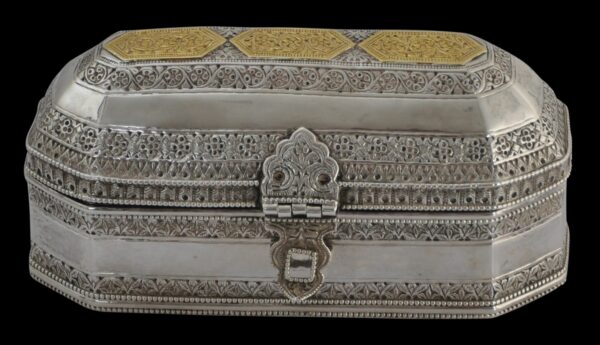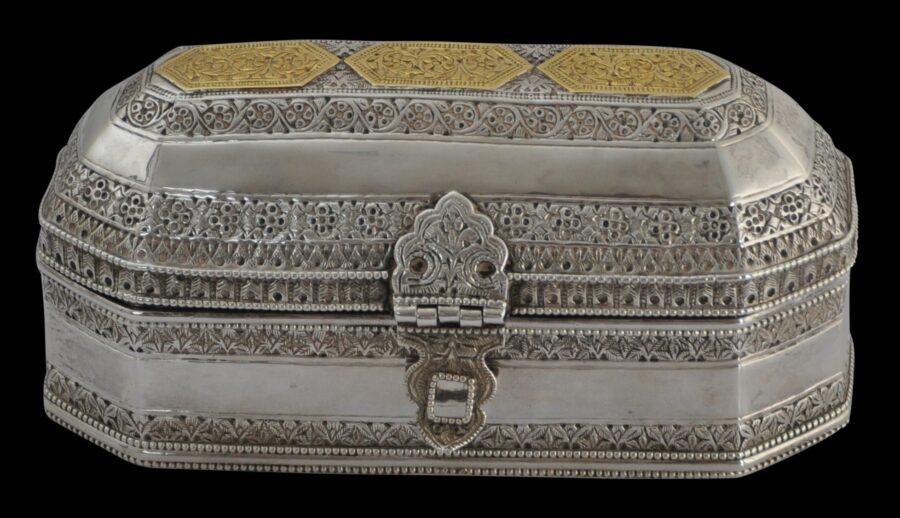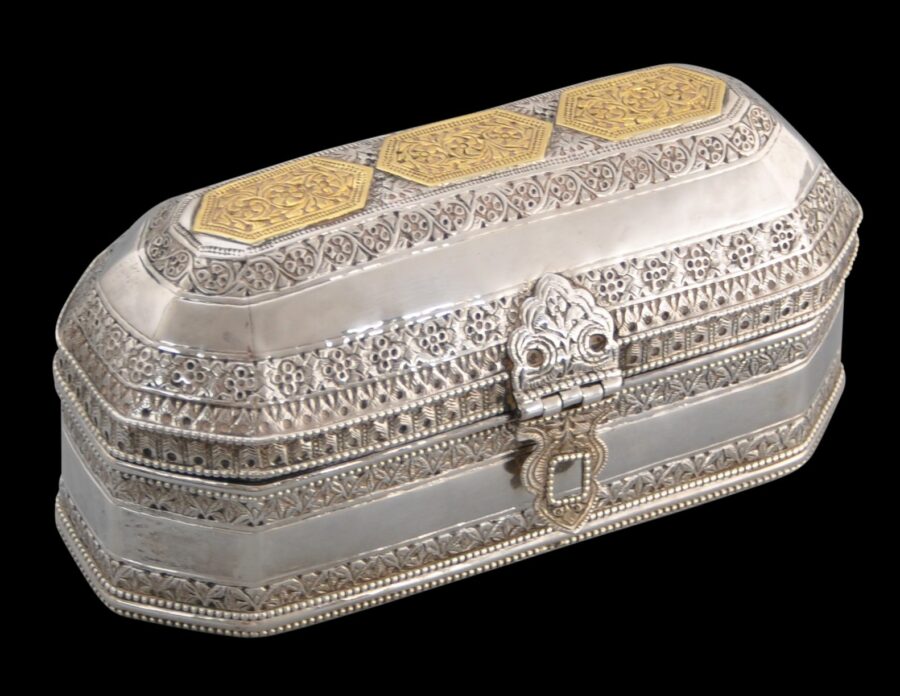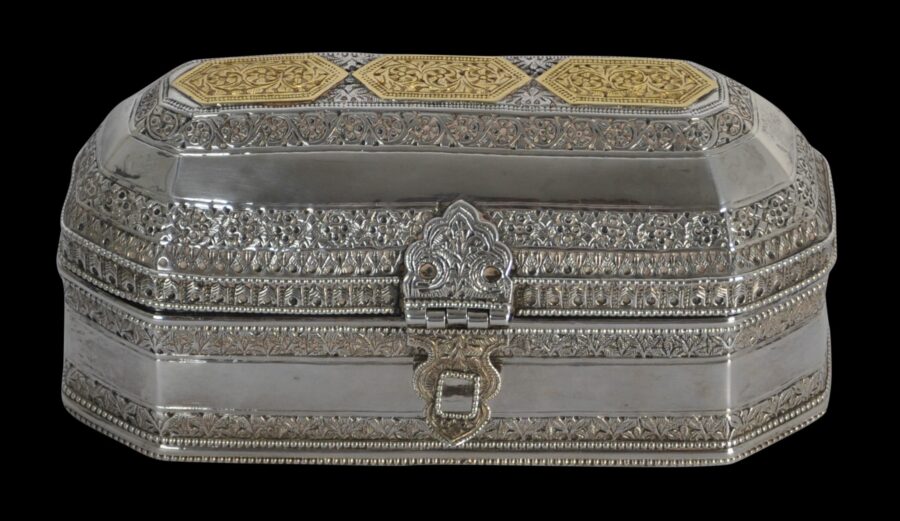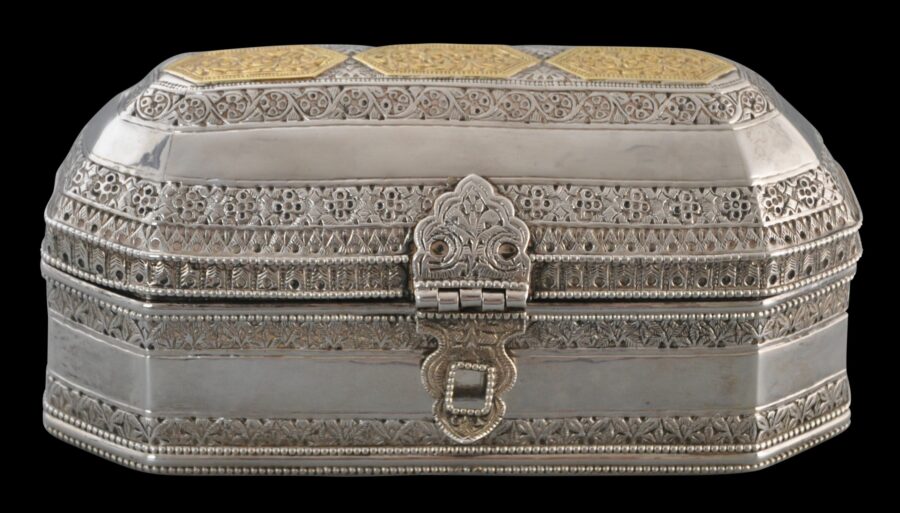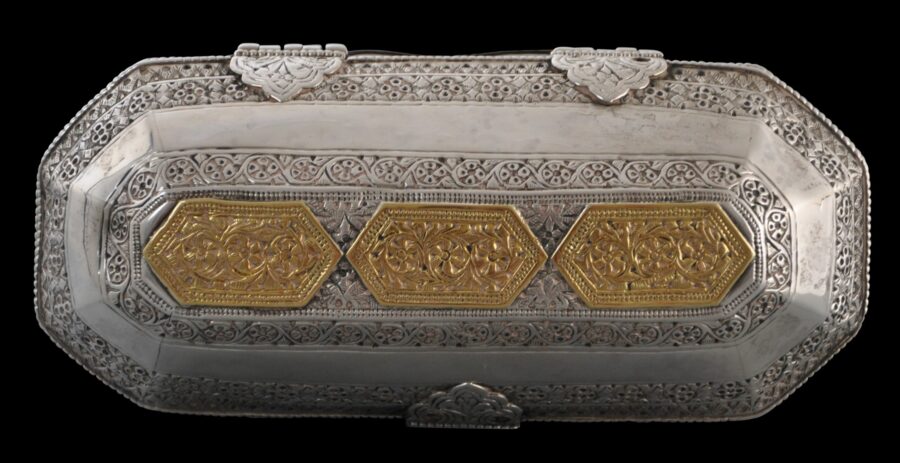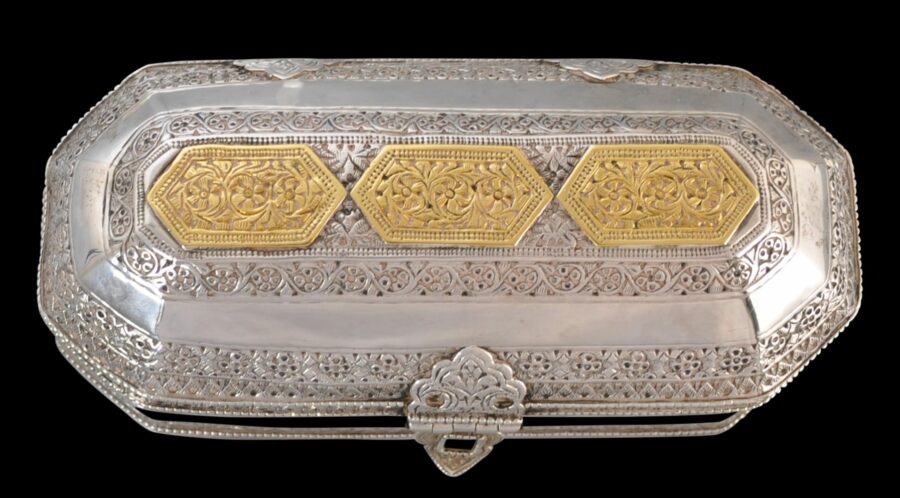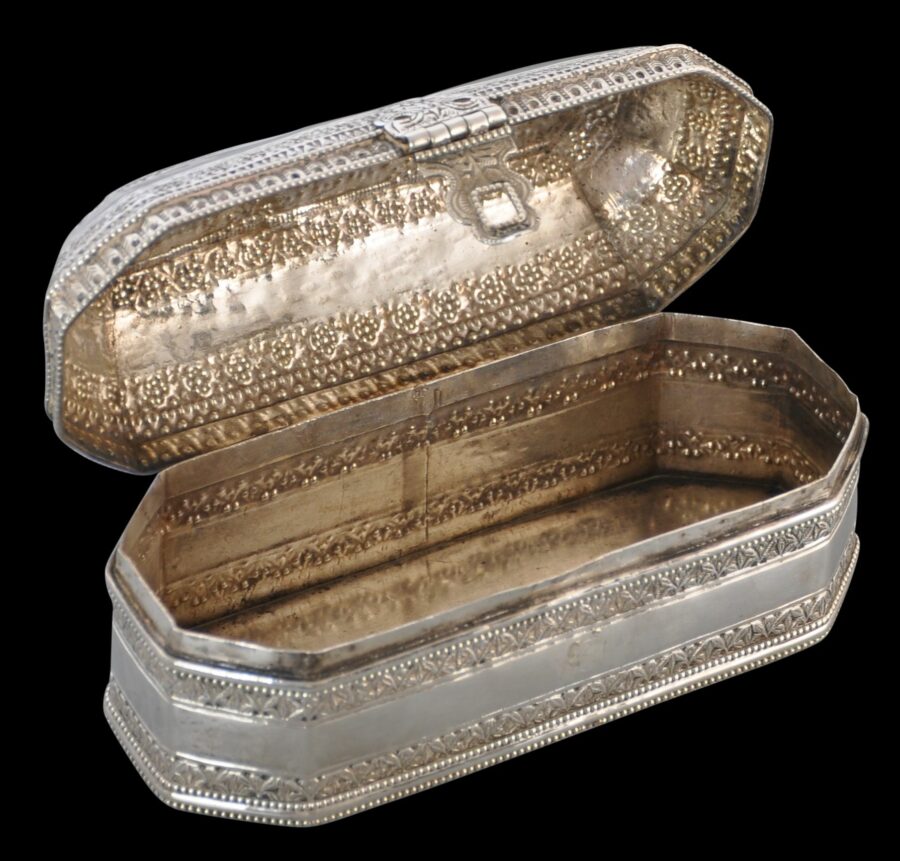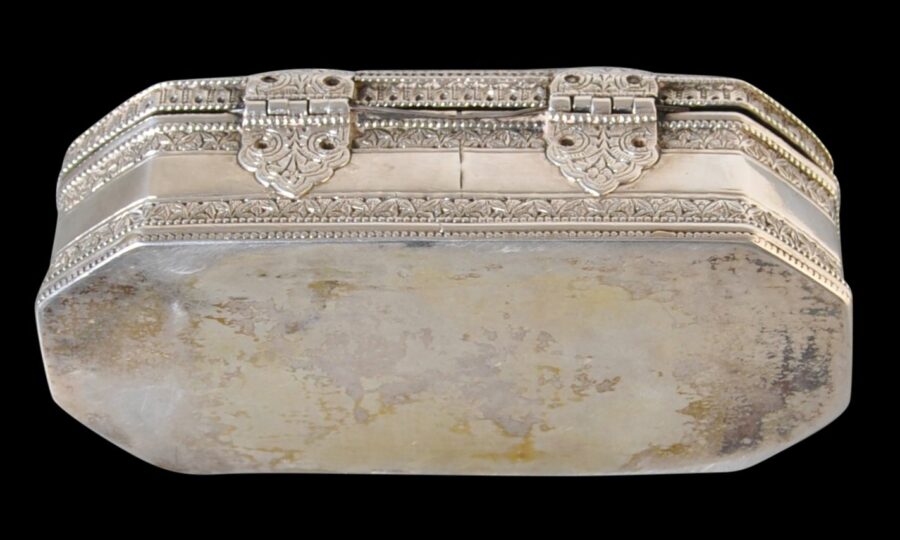This long, eight-sided pen box is of silver with a domed, hinged lid that is inset with three embossed gold plaques.
The box is decorated on the top and sides with bands of intricate incised floral and geometric motifs.
It has a latch decorated with arabesques – but no closing mechanism. The latch is for appearances only. The latch is mirrored on the reverse by two hinge covers, similarly decorated.
The decoration and the manner of how the gold has been applied is particularly Zanzibari, which is heavily influenced by Omani silverwork.
The decoration on Zanzibari silver often mirrors that on the carved wooden doors seen in Zanzibar and the rest of the Swahili Coast.
A related brass pen box found in Zanzibar and now in the British Museum has similar floral scrollwork.
Related items from Zanzibar (or the Swahili Coast more generally) that we have had in the past include a domed betel box, a platter, and a comb and another. Each incorporates embossed gold panels.
Zanzibar was at first ruled as an effective colony of the sultans of Oman but as the island became wealthier because of the trade in ivory, gold, spices, timber and slaves, the Omani court effectively relocated to this new commercial centre of dominions. Over time, Omani grew relatively impoverished and an administrative after thought whilst Zanzibar continued to prosper. This shift in commercial and political power was reflected in the jewellery and other arts.
Quite apart from expatriate Omanis and other Arabs who resided in Zanzibar, there were the local Swahili Africans, but also a rich mix of other trading groups such as Parsis, Indian Khojas and Bhoras, Hindu Indians, Christian Goans and Ceylonese.
The box is in excellent condition.
References
Abungu, G. & L., Lamu: Kenya’s Enchanted Island, Rizzoli, 2009.
Dale, G., The Peoples of Zanzibar: Their Customs and Religious Beliefs, The Universities’ Mission to Central Africa, 1920.
Hales, R., Islamic and Oriental Arms and Armour: A Lifetime’s Passion, Robert Hale CI Ltd, 2013.
Meier, P. & A. Pupura (eds.), World on the Horizon: Swahili Arts Across the Indian Ocean, Krannert Art Museum/Kinkead Pavilion, 2017.


